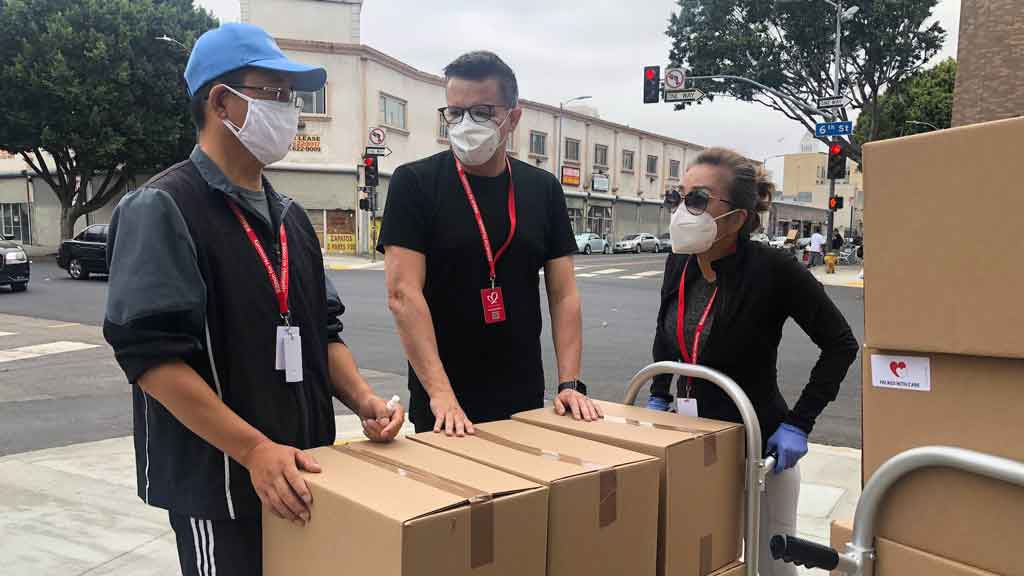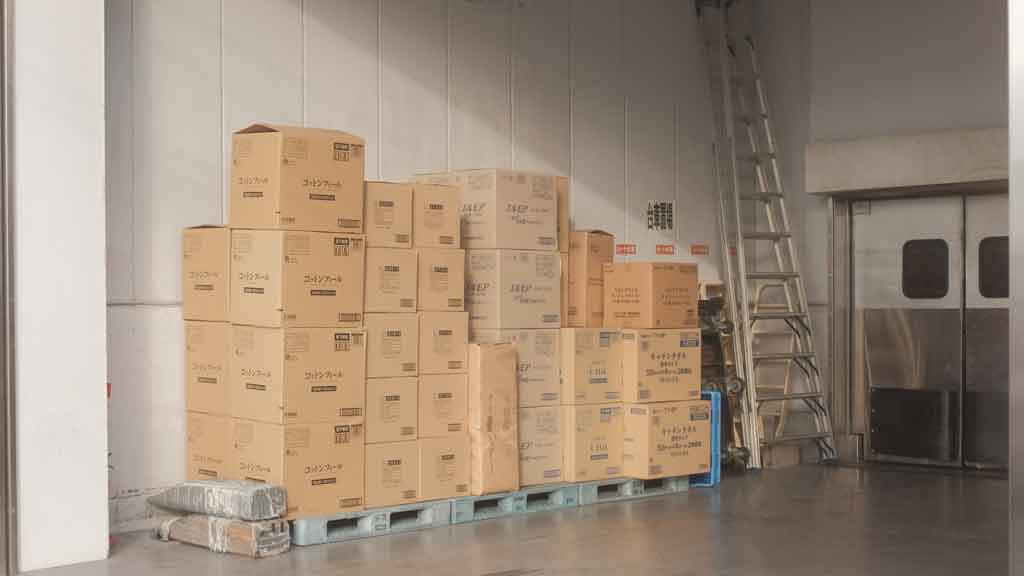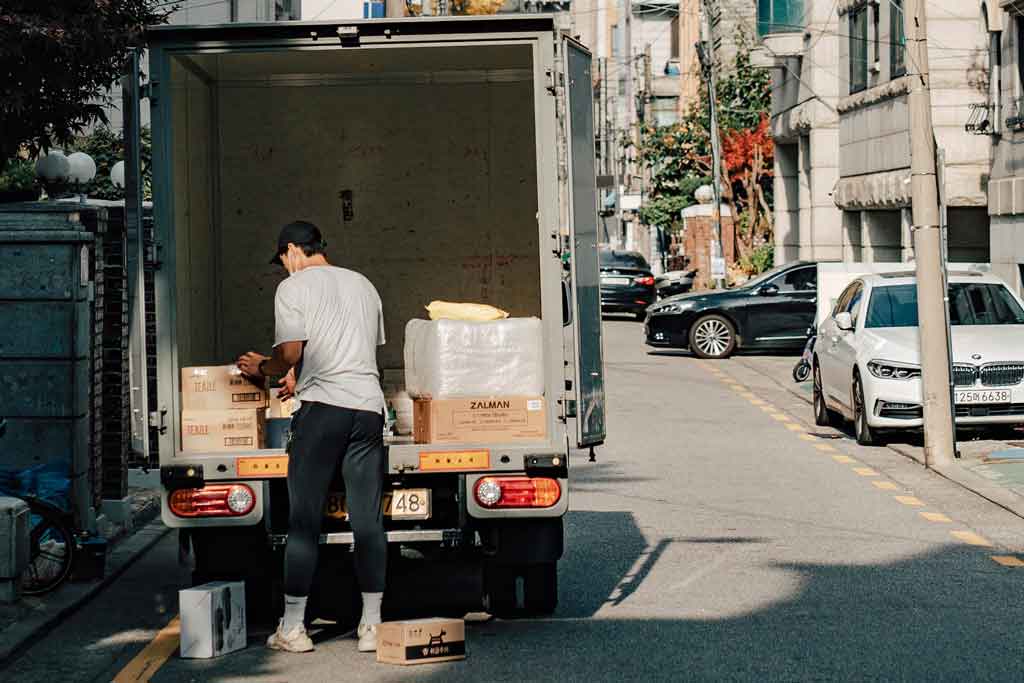Moving across country shipping boxes is a big deal, and it can be stressful. Hopefully, this guide will help you avoid common mistakes people make when moving out of state.
If you’re planning on moving across country shipping boxes, you must pack your belongings into shipping boxes. Here are some tips to make sure your things arrive safely and soundly., you’ll want to choose the correct size box.

Too big and your items will shift around and break; too small, and you won’t be able to fit everything in. Second, use packing paper or bubble wrap to secure your items and prevent them from shifting during transit.
Create Your Inventory
The first step in packing is creating an inventory of everything you plan to pack. This will help you ensure that nothing gets left behind and also allow you to separate items by room. If you don’t have room for all the information on your computer, consider using an online inventory tool like Google Docs or Evernote.
- Create a spreadsheet where you list each item, quantity, and location (e.g., “Living Room – 2” means there are two of those items in the living room).
- Include pictures, if possible, so it’s easier for movers to see what they’re picking up or putting down on moving day.
- Make sure there are enough boxes and packing materials available for each room—especially if heavy furniture needs its box!
- Tackle the most demanding room first (kitchen) because it’s usually the messiest! Leave any delicate items like glassware until last, so they don’t get jostled transit between homes but don’t forget about those essentials either.
- Pack a portable box with towels/washcloths/bathroom soap/toilet paper etc., just in case something happens a long way between now and then (breakdown while driving across the country.
If you have a lot of furniture (chairs, tables, etc.) that you want to keep together as a set, consider covering them with plastic wrap or a tarp and writing “KEEP THIS TOGETHER” on the outside.
If you plan to move long distance moving companies Houston, then be sure to have all of the supplies on hand before you start packing. Don’t forget to leave room for your clothes too! If you don’t have enough space in a closet or dresser, consider using an organizer system (like cubes), so everything has its place. If you’re unsure what to do with your furniture, consider renting a storage unit.
If you’re moving across country shipping boxes, check with local movers in the area first. They may have recommendations for reputable companies they’ve used in the past. If you’re moving out of state and don’t know anyone who can give you a hint, then ask around at work or school.
Box Yourself Up A Little At A Time.
When moving across country shipping boxes, the most important thing is to box yourself up a little at a time. While some items are more challenging to move, there are no hard and fast rules regarding what goes where. You can always add more things later on if you need them.
- Start with the clothes you wear most often – socks, underwear, shirts, pants, and jackets (not all of these necessarily go together). Put these in their box so they’re easy to access when it comes to laundry or getting dressed in the morning.
- Move on from clothing by putting your shoes into another box – this will help keep them from getting scuffed up during moving across country shipping boxes if not packed, along with other breakables like pots and pans!
- Next up: kitchen items such as plates, cups, bowls, and silverware – store these away separately from dishes because they could get broken easily during transit if placed within proximity.

If possible, try not to open boxes containing fragile items until after delivery since this will reduce. Also, don’t forget about spices/seasonings too. Typically herbs won’t break inside containers unless there’s something wrong with the sealant used during the packaging process, but sometimes labels fall off over time so treat everything like its unique case scenario until proven otherwise.
Non-perishable food items such as canned foods, dry goods, and boxed foods are next on the list – these don’t require special care so long as they’re not exposed to extreme temperatures (such as freezing/thawing).
Why Hire Movers When Relocating Your Business?
Discover how your business can move, generate profits, and relocate simultaneously by hiring our professional moving services. Schedule a free consultation with us, and we’ll help you get started.
Finally, if you have any perishables, such as fruits/vegetables, meats, or fish, ensure they’re in good condition.
When being packaged so they don’t spoil during transit (for example, if the fruit is bruised or cut, place it inside a plastic bag before putting it into a box). Also, label all packages with a sticker on the outside, which states what’s inside and how long it can last at room temperature (typically 2-3 days for most items).
Use The Right Boxes
When you’re preparing to moving across country shipping boxes, the last thing you want to do is spend hours packing up your belongings only to find out that the boxes you used aren’t sturdy enough or don’t fit well in your new home. That’s why it’s essential to choose the right size, type, and weight limit of the box for each item you’re packing.
- Choose an appropriately-sized box. While it may seem common knowledge that a “medium” sized box should hold certain items no matter where they’re going, there are recommended sizes based on length and width dimensions and weight limits (measured in pounds).
The best way to find out what size is right for your items is by checking with the manufacturer of whatever product it is that needs packaging—if you can’t find this information online or on their website, contact them directly for more details.
- Choose a type of container according to its contents. Some materials need sturdier containers than others; if unsure which type might be best, consult with someone with experience shipping similar items before deciding how much protection from the damage these items need.
- Consider lid style when choosing a container; some products come packaged with lids already included. Whereas others require customizing before being put into boxes, so make sure not only does this specific product come packaged with lids but also whether or not those lids are reusable.
- Use the right amount of cushioning for your product. If the item is fragile and could break easily, then it’s essential to make sure there isn’t too much space between its walls and whatever packing material you use; this way, it won’t bump up against other items when transferred around.
Most products have dimensions listed somewhere, but if they don’t, measure them yourself before ordering a box online. In case of slight discrepancies between what was advertised and what arrived, you can get one that fits inside with some extra room left over.
Seal All Boxes With Packing Tape
You can’t overstate the importance of packing tape in your moving across country shipping boxes adventure. It’s one of the most crucial tools in your box-packing arsenal, so much so that it’s possible to go a little crazy with it. While it might feel like you’re using too much packing tape, remember that if you run out during load day, you will wish you had more.

Tape all boxes closed before loading them into the moving truck! While some movers will seal boxes for you with their packaging materials, others won’t—so don’t take any chances by assuming this will happen. And if someone offers to seal your stuff and doesn’t do a great job , ask them again before they leave.
The last thing you want is your stuff to fall out of a box during the move. You can buy clear packing tape, but it’s a good idea to use colored tape so that it’s easy to find when you need a quick fix. If you use clear tape, ensure it’s not too thick, or it’ll take forever to remove later.
You can also use a sharpie to mark the outside of your boxes, so they’re easy to identify when you get them back. Be sure to label every box with your name, address, and contact information so that it’s easy for the movers to find their way around. You can also use this to send yourself a note later on.
Write Labels On Every Side Of The Box.
Write labels on every side of the box. You’ll want to ensure that your brands are clear and easy to read so that movers know exactly where each box needs to be loaded onto the truck. These labels will also help them determine which room numbers and house addresses correspond with each other if they have multiple deliveries scheduled for you in a single day.
- Labels should include:
- Room number, street address, and zip code
- Name of contents
- Contents of box
- If you have a lot of glassware, include “Fragile” on your labels.
- Avoid using adhesive tape on the sides of your boxes.
- Don’t label boxes that have already been packed.
- If you are using a moving company, be sure to place your labels directly on the side of the box so that they are done.
Put Heavier Items In Smaller Boxes And Lighter Items In More Giant Boxes
When moving across country shipping boxes, you need to pack items together and use the right-sized box for the item. For example, heavy things should be placed in small packages, while lighter items are better off in large ones.

Always use good quality tape as this will help prevent any damage during moving across country shipping boxes. Wrap fragile items carefully and place them inside a slightly larger box so they’re cushioned by packing peanuts or bubble wrap (which can also be used as filler).
Pack each box up to capacity but don’t overfill them—this will only make them more challenging for you to move around once you’ve packed everything up.
Always remember that if there’s a space inside a box after you’ve filled it with other smaller containers, then fill that space with something soft such as bubble wrap or packing peanuts so that your delicate belongings aren’t damaged during transportation.
If you don’t have any of these items available, try using old newspapers or magazines to fill the gaps between items in your box. The last thing you want is for fragile items to break during transit—this could mean that you need to replace them.
When packing up your belongings, don’t forget to take a photo so you can remember what’s inside each box. This will be especially important if you have valuable or sentimental items as it’ll help protect them from damage during transit.
Fill In Gaps With Packing Paper And Bubble Wrap.
Fill in gaps with packing paper and bubble wrap. When you’re moving across country shipping boxes, you’re likely to bring a lot of stuff. But even if your moving truck is full of boxes, there are still some spaces that won’t be filled.
These empty spaces can cause your items to get damaged or even break when the truck moves around. You can fill these gaps by cutting up a roll of packing paper and placing it inside the box on top of clothing or other soft items.
You can also use bubble wrap to create a cushion between hard items like books or glassware and easily breakable things such as plates, bowls, and glasses. If your moving company didn’t include enough packing peanuts for every box that needs them.
Try filling in extra space with newspaper before adding clothes or towels—this will provide more cushioning without adding weight.
Use a packing tape gun to seal up all your boxes. If you’re moving across the country, you’re likely to have quite a few boxes with stuff packed inside them. You can minimize the chances of any damage by sealing each box with packing tape before loading it onto the truck.
This will prevent items from falling out and keep water out if the truck gets caught in a rainstorm.
If you’re only moving across town or just around the corner, you probably don’t need to worry about this step—but if you do have a lot of stuff packed up in boxes and need to keep it safe for your move, then definitely use packing tape on each one.
Organize Will Make Packing Easier
Packing will be less stressful if you take it slow and organize as you go. Here are some tips for keeping your packing process organized:
- Don’t try to pack everything in one day. It’s better to spread the process over several days or weeks, especially if you have a lot of stuff to fill.
If you try to do it all at once, there’s a good chance that something will get missed or forgotten (like an important book). The extended period also gives your body time to recover from moving weight all day.
- Don’t pack everything at once. Organize what needs to be loaded first into boxes, then move on to putting things away when they’re done being crammed into their respective containers.
This ensures that nothing gets lost under other items while waiting its turn to be moved out of its usual spot in the apartment/house/room.
Start with kitchen cabinets/drawers before moving on to bedroom closets (and wardrobes), living room bookshelves/cabinets, bathrooms, and medicine cabinets (under sink storage) because these areas tend not to change much between apartments.
If you’re worried about forgetting something, list everything that needs to be packed and check it off as you go. It’s also a good idea to take pictures of the space in each room before moving anything out to remember what they looked like while still full of things.
Try not to fill it right away when moving into a new space. Keep some space around so you can move things around quickly and find items later on without having to go through everything all over again! If you’re worried about forgetting something, list everything that needs to be packed and check it off as you go.
Conclusion
Packing doesn’t have to be stressful when you’re moving. I hope these tips have helped you get a head start on your move and feel confident in your ability to pack up all those boxes.
If you’re moving across country shipping boxes, it’s important to choose the right shipping boxes. Be sure to pick boxes that are sturdy and the right size for your items. You should also pack your boxes carefully to avoid damage during shipping. Finally, be sure to label your boxes clearly so that they end up in the right place when you move.




